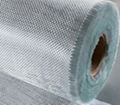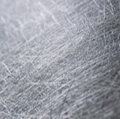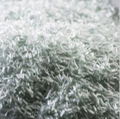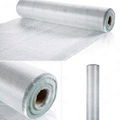| Model: | 310 |
|---|---|
| Brand: | Jushi |
| Origin: | Made In China |
| Category: | Construction & Decoration / Other Construction Materials |
| Label: | Direct Roving , E-glass Fiberglass , Jushi Fiberglass |
| Price: |
US $0.5
/ kg
|
| Min. Order: | 1000 kg |
| Live Chat: | Last Online:06 Mar, 2018 |
| Direct Roving | ||
| Direct Roving for weaving is compatible with unsaturated polyester, vinyl ester and epoxy resins. Its excellent weaving property makes it suited for fiberglass product, such as roving cloth, combination mats, stitched mat, multi-axial fabric, geotextiles, molded grating. The end-use products are widely used in building & construction, wind power and yacht applications. | ||
| E-Glass Direct Roving 310
for Filament Winding and Pultrusion |
|
|
| E-Glass310 Direct Roving is coated with a silane-based sizing compatible with epoxy resins and designed for filament winding and pultrusion applications. 310 is suitable for use in insulation rods, hollow insulation bushings, and insulation stanchions, and is widely used in power generation, transmission, and distribution systems. | ||
| SPECIFICATIONS | Features | Technical Parameters | ||
| Type of Glass:
E-Glass (E) |
• Complete and fast wet-out
• Good integrity • Good mechanical properties • Good moisture resistance • Good ribbonization • High fiber integrity • Low fuzz |
Linear Density (%):
± 5% ISO1889 |
||
| Type of Fiberglass:
Direct Roving (DR) |
||||
| Moisture Content (%):
≤ 0.10% ISO 3344 |
||||
| Standard Linear Mass
Densities (Tex): 1200,2400,3000 |
||||
| Size Content (%):
0.60 ± 0.10 ISO 1887 |
||||
| Filament Diameter:
17, 24 microns |
Resin Compatibility: | |||
| • Epoxy (EP) | ||||
| Most Common Sizes:
EDR17-1200-310 EDR17-2400-310 EDR17-3000-310 EDR24-1200-310 EDR24-2400-310 EDR24-3000-310 |
Uses: | Breakage Strength (N/tex)
≥ 0.40 (≥ 2400tex) ≥ 0.50 (< 2400tex) ISO 3341 |
||
| • Hollow insulation bushings
• Insulation rods • Insulation stanchions • Power generation, transmission and distribution systems |
||||
| MECHANICAL PROPERTIES | ||||
| Tensile Strength:
1900-2100 MPa ASTM D2343 |
||||
| Tensile Modulus:
78000-82000 MPa ASTM D2343 |

| Filament Winding Process | |
| Filament Winding is a process of winding resin impregnated fiberglass (or carbon fiber and other reinforcements) on a mandrel surface in a precise geometric pattern. This is accomplished by rotating the mandrel while a delivery head positions the wet band onto the mandrel surface. Filament winding process is widely applied in manufacturing pipes, tanks, cylinders and other rotating shapes. | |
| Continuous Filament winding Process | |
| Continuous Filament winding is an open molding process that uses a rotating “disappearing” mandrel, which is formed from a continuous steel band continuously traveling in a cork-screw motion around the spacer bars and returning through the center after de-molding. Successive stations are used to form layers of varying composition. Both chopped and continuous rovings are used. The part is heated and cured in place as it travels through the line and is cut into a specific length with a traveling cut-off saw. This process is limited to large diameter pipes or cylinder walls. The diameter is infinitely adjustable. | |
| Pultrusion Process | |
| Pultrusion process is used to make continuous, constant cross-section shapes, either solid or hollow shapes. The process involves pulling continuous rovings, mats or fabrics through an impregnation bath, squeeze-out and shaping section and the heated die. Because it takes hundreds of roving packages to make a Pultruded part, creels must be used to store them and guide them efficiently. By use of beck tension and forming tools, the reinforcements are guided precisely into an exact location in the bath and in the final part. The excess resin is gradually squeezed out before entering the curing die. The final shape is formed under high temperature and high pressure (created by packing resistance and heat expansion) conditions, making it virtually void free. Low voids are critical for Electrical parts. Because of the high reinforcement loading, the resulting parts can have very high mechanical strength and modulus, in the zero degree direction. This makes Pultruded shapes excellent structural members (I-beams, angles and T-sections) used in gratings and large structures. Variations of Pultrusion process included: pull-forming, using UV or Radiation curing and simple coating die production of strength members. | |







